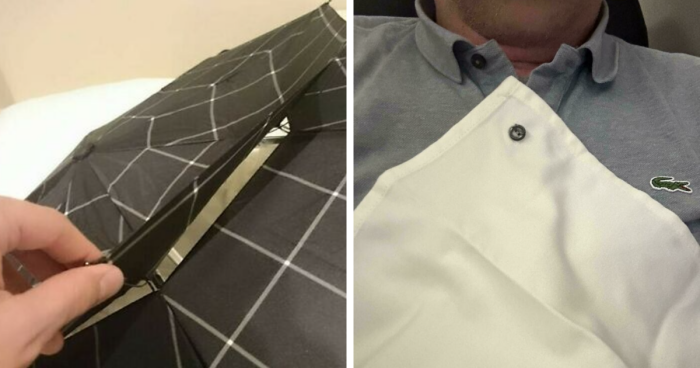In the early 1960’s Georgian cavers first explored the entrance shaft and named it Krubera Cave after the famous Russian karst scientist Alexander Kruber, but were stopped by a squeeze in the bottom of a shaft at 95 metres.
Through the remainder of the 60’s and 70’s it remained mostly neglected. In 1982 cavers from Kiev resumed working in Krubera, there was slow progress up to 1987 but they had deepened the cave to 340 metres.
Due to political instability and war caving was was largely suspended from 1988 to 1998.
In 1999 the Ukrainian Speleological Association entered the Krym, an unexplored window at 220 meters. This changed everything, this magic window that was known about since the mid 80’s but only entered in 1999 transformed a 340 metre pit into the deepest cave in the world.
With a staggering depth of 2,197 meters (7,208 feet), Krubera Cave is the deepest known cave in the world. To put that in perspective, imagine six-and-a-half Eiffel Towers stacked on top of each other underground.
Krubera became the deepest-known cave in the world in 2001 when the expedition of the Ukrainian Speleological Association reached a depth of 1,710 m (5,610 ft) which exceeded the depth of the previous deepest-known cave, Lamprechtsofen, in the Austrian Alps, by 80 metres (260 ft). In 2004, for the first time in the history of speleology, the Ukrainian Speleological Association expedition reached a depth greater than 2,000 metres (6,600 ft), and explored the cave to −2,080 m (−6,824 ft). Ukrainian diver Gennadiy Samokhin extended the cave by diving in the terminal sump to 46 metres’ depth in 2007 and then to 52 m in 2012, setting successive world records of 2,191 m and 2,197 m, respectively. Krubera is one of the two known caves on Earth deeper than 2,000 metres.
Overhead View of Cave
Cave Profile
The Voroniya cave (Kruber caves or Krubera-Voronya) is the world’s deepest cave that has been studied by specialists. It is situated in the massif Arabika of the Ghagra mountain range, in Abkhazia, Georgia. The cave has two branches: Kuibyshevskaya (1697 meters deep) and Main (2197 meters deep), the second ramifies into several smaller branches.
This subvertical cave represents a chain of wells interconnected by stiles and tunnels. The deepest plumbs are 115, 110 and 152 meters. On the depth of 200 meters the cave ramifies into two main caves. One of them branches into several small ones. The cave is located in the limestone rock mass.
The Big Cascade, the largest pit in Krubera Cave, plunges 499 feet (152 meters), but spans less than a tenth of the distance to the cave’s unknown bottom. Descending into Krubera, in the country of Georgia, one team member said, “was like climbing an inverted Mount Everest.”
For the first time the cave was researched by Georgian speleologists in 1960, they reached the depth of 95 meters. The next expedition was sent to reseach the cave in 1968. The cave was forgotten and investigated again, each time new teams of specialists were going deeper and deeper into the cave and setting new records.
As soon as you enter 200 meters into the cave, there are two main branches namely the Non-Kuybyshevskaya (explored to the depth of 1,293 m in 2008) and Main (2,197 m deep). Among the biggest challenges that cavers have ever encountered would have to be a sump. There are 8 known sumps up to the deepest part of the cave. Terminal lake – Dva Kapitana Sump – is the deepest one, it has been dived up to 52 m depth.
Water in the cave is very cold. At the 100 m depth the temperature is just 1° C, at 2,000 m depth it reaches 7.2° C. Air temperature in the cave is similar.
In winter the flow of water in the cave is very low, but in the late May and June it reaches the maximum and lowest parts of the cave are then inundated.
Back in 2007, Crimean diver Gennadiy Samokhin was able to extend the map when he dived into the “terminal sump.” A sump or siphon is a term used in speleology to describe a passage in a cave that is submerged underwater. Some sumps in the Krubera Cave are said to be have waters so cold, many divers feel their fingers going numb after swimming across them. In Samokhin’s case, he was able to dive 150 ft in 2007 and 170 ft in 2012 to extend the cave’s depth. He earned the world record for the deepest cave diving twice for both expeditions.
So what else can cavers expect other than a worthwhile adventure around the deepest parts of the earth? The Krubera is home to several creatures as well. A notable one is the species of cave beetle that was only discovered recently. Most of these animals have adapted well to life underground with their hypogean lifestyle.
The Cave now is very popular destination for expeditions coming from many countries, as it is a kind of “Everest” in speleology.
Currently speleologists focus on the exploration of other passages in hope to connect Krubera Cave to other nearby caves and reach more significant length of the cave.
Check out the videos below to see what it’s like diving sumps, and rappel down to the 250 meter mark with Yuri Kasyan in Krubera cave to the intersections of the Main passage and Nekuybyshevskaya.
278views
Share on FacebookI'd love to see more posts like this! Truly informative and fascinating. I'm in awe of the physical and mental fortitude cavers must possess, and the videos reinforced that. I do wish that the still photos had captions explaining just what we're seeing. Incredible post!
Thank you, I do plan on uploading more posts about caves, as a once avid caver myself, I would have loved to visit this one.
Load More Replies...Fascinating! I'm in awe of the cavers , just looking at some of the photos made me cringe. (I'm kinda claustrophobic.)
I will be sure to add some very cringe worthy photos in my next cave post. You also find out very quickly if you're claustrophobic or not once inside a cave.
Load More Replies...I'd love to see more posts like this! Truly informative and fascinating. I'm in awe of the physical and mental fortitude cavers must possess, and the videos reinforced that. I do wish that the still photos had captions explaining just what we're seeing. Incredible post!
Thank you, I do plan on uploading more posts about caves, as a once avid caver myself, I would have loved to visit this one.
Load More Replies...Fascinating! I'm in awe of the cavers , just looking at some of the photos made me cringe. (I'm kinda claustrophobic.)
I will be sure to add some very cringe worthy photos in my next cave post. You also find out very quickly if you're claustrophobic or not once inside a cave.
Load More Replies...
 Dark Mode
Dark Mode 

 No fees, cancel anytime
No fees, cancel anytime 































































13
4